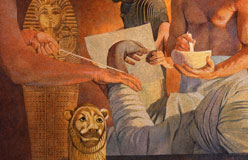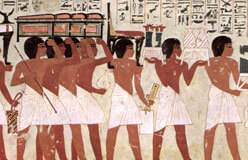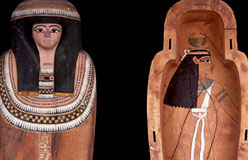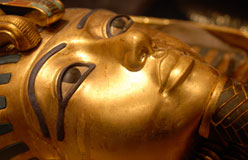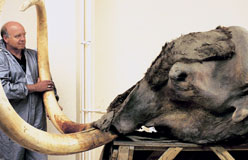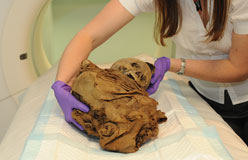Mummies prepared by human beings can be found all over the world. Some of the most famous come from Egypt, where mummies were made through a complicated process.
Ancient Egyptians believed that a new life began after death, but there were certain rules about how that happened. To guarantee everlasting life, the dead body had to remain whole.
Over the centuries, Egyptians tried various ways to preserve dead bodies. Around 2,600 B.C., they hit upon a perfect solution—making mummies.
Special priests, called embalmers, spent 70 days carefully preparing the body to remove all the moisture. Wearing a jackal mask, the chief embalmer chanted magical spells as he did his job. The mask represented Anubis, the god of embalming.
At first, mummification was so expensive that only pharaohs (ancient Egyptian rulers) could afford it. But by 1550 B.C., many ordinary Egyptians were able to afford it, too.
Mummification techniques changed over time, but most embalmers followed these ten steps.

